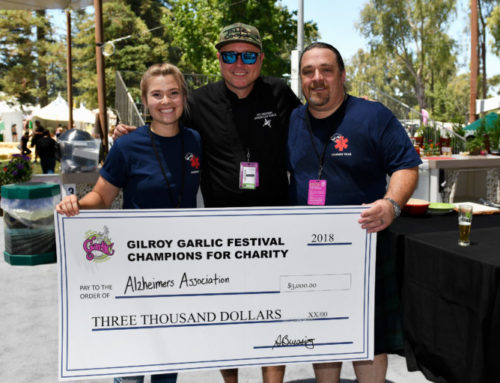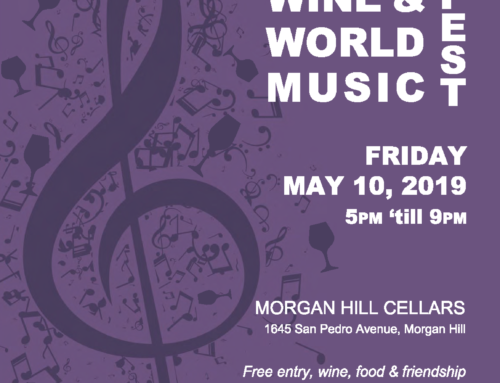Published in the June 11-27, 2014 issue of Morgan Hill Life
By Marty Cheek

Marty Cheek
At the library a couple of weeks ago, I eavesdropped on a conversation a teenage girl was having with her friends about her system for cheating on tests. The first time she takes a classroom test, she admitted, she snaps photos of the exam with her phone. When she gets a re-do because she failed the test the first time, she always got an “A” grade because she now knows the answers.
I found myself pitying her. What an unoriginal method of cheating. How sad that she had not discovered a more effective and fun way to cheat on tests – one I discovered decades ago in high school. My cheating system involves using the magic of music in the mind for easy recall of test information.
Here’s my “Go for Baroque” method to cheat on tests. I would listen to a piece of Baroque music several times – say, something lulling such as Pachelbel’s Canon and Gigue. I’d purposely get the melody to loop in my head as an ear worm. Then I would go through my study notes while this piece played over and over in my head. When it came time to take test, I would “hear” the tune in my mind again. This activated the answers, which had been melodically attached to the music. I always got an “A” using this system.
No teacher ever caught me when I used my musical technique of cheating on tests. I’ve thought about patenting my system, calling it “Marty’s Music of the Mind Memorization Method” and marketing it on late-night TV infomercials. But it turns out that my cheating system for easy information recall isn’t really all that original. Human brains are wired by evolution to use the rhythmic patterns of music to store and recall information.
Our ancestors used song systems more than 100,000 years ago to help them remember essential survival skills such as how to prepare food or get water. Bone flutes dating back 80,000 years indicate that people must have been singing much longer than that. Before writing became prominent as an information storage system, traveling bards used music to memorize long ballads about the Trojan War and other epic stories to entertain audiences.
Humans are the only primates that can recognize the beats of music. Monkeys can’t tap their feet to songs, but this action comes naturally for most people. Music even induces us to move in strange jerking motions with other people to achieve a pleasure response. This dancing experience serves as an emotionally-based social bonding strategy for pairing and potential mating. For thousands of years, music has also been used to train armies by marching to a strident drum beat, thus forming units of soldiers with minds literally tuned to join together to fight in a battle.
Human brains have evolved to have a structure called the ventral stiratum, which releases a pleasure-inducing mind-chemical called dopamine. This structure is stimulated by the sounds of music, so consider music a type of drug, one that won’t be criminalized.
In middle school I accidentally discovered the drug-like mind-altering power of music. My home had a room with no windows that was pitch dark when the lights were off. One evening, I placed an LP disk of “Bach’s Greatest Hits” on the stereo, turned off the lights and relaxed in the lounge chair. Staring into the black, I was soon surprised to see geometric light patterns form in synchrony to the music. These entrancing symmetrical patterns seemed like a kaleidoscope. I wondered what they might look like if colors were added, and suddenly my mind provided a rainbow splash to the geometrical display.
Years later, I discovered I had experienced a form of synesthesia. I got hooked on this musical light show created in my mind and spent half an hour or so every evening enjoying it. As a side effect from these tripping out sessions with Bach, I found it easier to concentrate on learning academic material.
Imagine what the quality of life in Morgan Hill would be like without the pleasure of music. The annual Mushroom Mardi Gras and Taste of Morgan Hill would not be nearly as much fun without people grooving to the beat of talented musical performers. We are blessed with so much wonderful music here including the South Valley Symphony, the Morgan Hill Wind Symphony and at eatery venues such as 88 Keys, Trail Dust and GVA Cafe.
And starting this week, the Morgan Hill Chamber of Commerce’s Friday Night Music Series brings live summer music to the Community Center. No doubt, each Friday evening at the Downtown Amphitheater you’ll see people socially bonding by stimulating the production of dopamine in their brain’s ventral stiratum through the activity of jerking their arms and legs rhythmically in synchrony to the music beat. Here’s wishing you the chemically-induced magic of the mind as you enjoy music in Morgan Hill.






